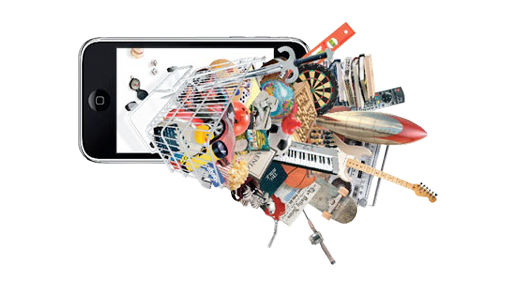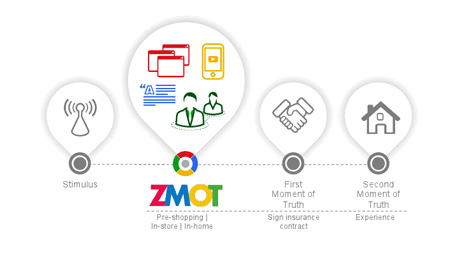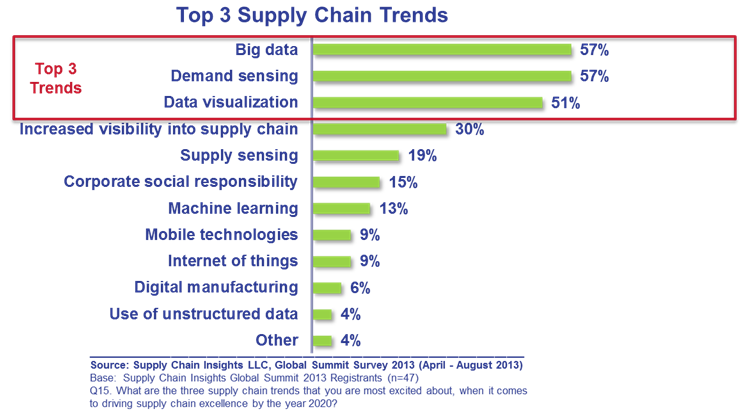What would you say is the next great disruption coming to our supply chain world? I’ve heard some common themes, such as weather, political changes, even war. Those are potential, and somewhat out of our control. However, there’s one great disruption already occurring, which has yet to truly “touch” supply chain. It’s the consumer. And, WOW! how they ever already impacted retail and brand marketing. I watched a TED Talk video by Philip Evans, from Boston Consulting Group and shuddered to think that all our traditional fulfillment and inventory models can be drastically transformed by the “consumer”. Philip Evans shares how today’s consumer is sharing a colossal amount of data to come to a buying decision. Some people call this “Big Data”. Others consider how this “data” is used, and use the term “Omni-Channel” or “Internet of Things”. Google wrote a great book, ZMOT, or Zero Moment of Truth.
This is the point where a consumer looks across all the channels in the market, using multiple devices to search reviews, ratings, styles and prices. That’s before the P&G First and Second Moments of Truth. They trust other online reviews over the brand. This is how they’ve drawn the ZMOT challenge.
As a supply chain practitioner, do you notice something missing? Where is the supply chain nodes? 3PL’s, Contract Manufacturing, Suppliers, Logistics providers… Supply Chains have primarily stayed on the outside of this challenge. Sure, we’re concerned, and in some cases stocking more inventory at local distribution centers. But, we continue to see the trend as a sales and/or a demand planning issue; something where we need better visibility to real time demand or a finer cut of demand signals. Supply Chain Insights has done research on the top trends:
However, I look at these trends as primarily a “consumer to sales” challenge. Supply chains have yet to digest the impending disruption beyond retail fronts and sales. The balance of power has shifted to the buyer, but supply chains still see it has a retail issue. What if the next great supply chain disruption was… Consumers used multiple devices, internet of things, etc, to check FGI (finished goods inventory) /sub-assembly and raw inventories, build plans, and sourcing options, as they are considering a purchase! In the book ZMOT, the comment was made: , “We are officially living in a post-Akerlof world – any trace of information asymmetry tipping the balance in favor of the seller is officially gone.” It’s happened in the consumer to marketing/brand arena. I would expect it to come and impact supply chain very soon. How has this happened? Listen to Philip Evans’ TED Talk about the falling transaction costs. Not just processing time coming down, but communication time shrinking. The time he refers to is the customer’s time to search, analyze and purchase a product. Mobile devices have not only brought transparency to the buying process, but also have brought down the communication time. This falling transaction time is impacting the traditional vertical value chain.
In essence, allowing competitors to step into the value chain and disintermediate, ultimately, collapsing the economies of scale, and creating less need for the vertical integration. He explains it as using the Encyclopedia product. But, it’s happening today with Google in the auto industry, Amazon in the grocery industry, and Apple in the music industry, and many others. So, imagine a customer going to social media and online communities to consider a product. Then, they go to the retail store, scan the barcode to check inventory, price, and promotions in their 10 mile radius. Then, they check online for deals and shipping dates. Since they are brand agnostic, they look at inventories in the supply chain network; they want to customize their purchase. They want to assure the sourcing meets their “sustainable” expectations. They are mobile, so they want to have it delivered to where they want it and when. They understand what options make up the end product, so they demand “deals” on these options (such as memory on a PC). In essence, the consumer is putting a postponement demand on the brand. From the ZMOT book, they show today’s consumer is looking around for deals, reacting much faster to purchase and effortlessly willing to move from brand to brand. My thoughts on what supply chain leaders need to do starting TODAY!
- Get a method to capture, and USE all this “Big-Data”. Most of this big-data is demand centric, but supply chains need to capture, segment and analyze these demand patterns – Building a true planning system of record is core to this challenge.
- Take these core patterns and create supply chain models. Start with the as-is model supporting the pattern.
- Simulate what it would be like if a pattern had access to raw materials and inventory positions in the network.
- Test scenarios that would optimize inventory costs, postponement options, shipping costs, etc…
- Analyze what these new “costs” would do to COGS, SG&A, operating income and margin.
Yes, this is hard stuff. But, the pay-off could position your supply chain as an innovative leader. This isn’t about incremental change to the business strategy. It’s about a new business strategy to address an impending disruption. Philip Evans stated, “Technology is driving the natural scaling of the activity beyond the institutional boundaries used to thinking about business strategy.” The starting point is having a planning system of record, which has fast access to your entire end-to-end supply chain network. Then, and only then, can you simulate new business strategies.








Discussions
Today demand is created - or lost - through digital channels. This is very evident in one of the most volatile industries out there - the entertainment industry.
Immediate demand for a singer or song can be created in a minute - the 'viral' phenomenon everyone is hoping for. If this demand is immediately met - for example through a digital download or the ability to experience another song, video or 'mind candy' this results in immediate connections between the artist and the fan. This can then be sustained through ongoing digital media - reinforcement through Twitter et al - on the so called smart devices that are the Third Eye of the new generation.
Understanding the forces behind demand creation - and satisfaction - is a new challenge for supply chain practitioners. And this is at a level beyond the 'e' hype of the early 2000's - this is not just a different flavor of the same old same old - in this new digital age it is possible to reach consumers in parts of the globe that do not even show up on traditional radar screens!
Leave a Reply